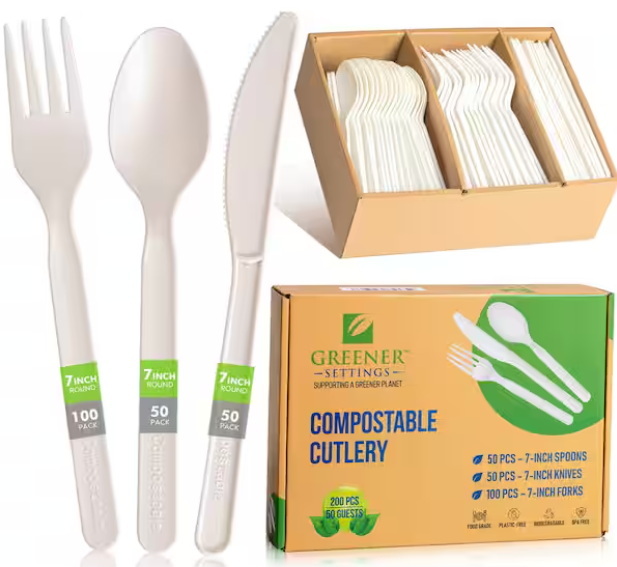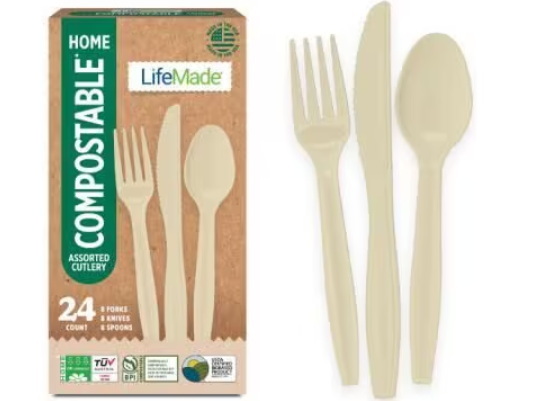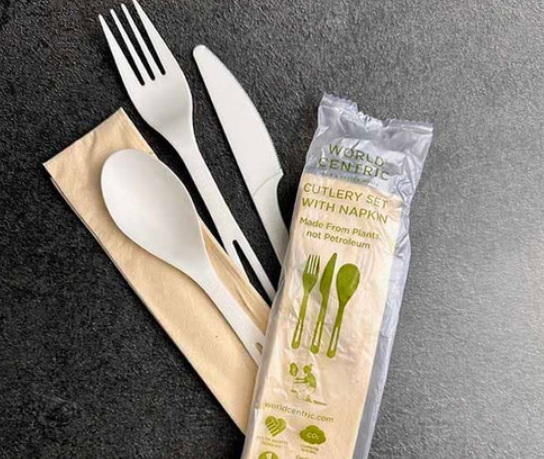
Content Menu
● Introduction to Disposable Cutlery
>> Types of Disposable Cutlery
● Safety Considerations for Spoon and Fork Disposable Sets
>> Material Safety
>> Manufacturing and Treatment
>> Handling and Storage
● Environmental Impact
>> Plastic Pollution
>> Sustainable Alternatives
● Innovations in Disposable Cutlery
>> Plant-Based Bioplastics
>> Mushroom-Based Materials
● Consumer Preferences and Market Trends
>> Impact on Businesses
>> Government Regulations
● Conclusion
● FAQs
>> 1. Are Wooden Spoon and Fork Disposable Sets Safe for Hot Foods?
>> 2. Can Edible Cutlery Be Used for Hot Soups?
>> 3. How Do I Ensure the Hygiene of Disposable Utensils?
>> 4. Are All Wooden Utensils Biodegradable?
>> 5. Can I Reuse Disposable Wooden Utensils?
The use of disposable cutlery, including spoon and fork disposable sets, has become increasingly popular due to their convenience and eco-friendly appeal. However, concerns about their safety for food use have sparked debates among consumers and environmentalists. In this article, we will delve into the safety aspects of spoon and fork disposable sets, exploring their materials, manufacturing processes, and environmental impact.

Introduction to Disposable Cutlery
Disposable cutlery, made from materials like plastic, wood, bamboo, or even edible materials, offers a convenient alternative to traditional reusable utensils. The rise of spoon and fork disposable sets is largely driven by their ease of use and the growing awareness of environmental issues associated with plastic waste. These utensils are widely used in outdoor events, take-out services, and even in some households for their convenience.
Types of Disposable Cutlery
1. Plastic Cutlery: The most common type, made from plastic materials. However, it is not biodegradable and contributes significantly to plastic pollution. Despite this, many modern plastic utensils are BPA-free, reducing health risks associated with chemical leaching.
2. Wooden Cutlery: Made from sustainable wood sources like birch or bamboo, these are biodegradable and compostable, offering an eco-friendly alternative. Wooden cutlery is non-toxic and can be used for both hot and cold foods.
3. Edible Cutlery: Made from natural ingredients like flours, these are not only biodegradable but also edible, reducing waste entirely. Edible cutlery is a novel solution that combines functionality with sustainability.
4. Bamboo Cutlery: Bamboo is a highly renewable resource, making bamboo cutlery a sustainable option. It is lightweight, durable, and can be composted at the end of its life cycle.
Safety Considerations for Spoon and Fork Disposable Sets
Material Safety
- Plastic: While convenient, plastic cutlery is made from non-biodegradable materials that can leach chemicals into food, especially when heated. However, many modern plastic utensils are BPA-free, reducing health risks. It's essential to choose BPA-free options to ensure safety.
- Wooden: Wooden cutlery, if sourced responsibly and untreated with harmful chemicals, is generally safe for food use. It is non-toxic and biodegradable. However, improper treatment or sourcing can lead to contamination risks.
- Edible: Edible cutlery is made from natural ingredients and is completely safe for consumption, eliminating any risk of chemical contamination. It is an innovative solution that aligns with sustainable living practices.
Manufacturing and Treatment
The safety of spoon and fork disposable sets also depends on their manufacturing process. Properly processed wooden cutlery, for instance, meets food safety standards similar to metal and plastic cutlery. However, it's crucial to avoid wooden utensils treated with harmful chemicals like formaldehyde. Edible cutlery must be made from food-grade ingredients to ensure safety.
Handling and Storage
Proper handling and storage are essential to prevent bacterial contamination. Disposable utensils should be stored in clean, dry environments and handled with clean hands or gloves to minimize the risk of contamination. This is particularly important for wooden and edible cutlery, which can absorb moisture and become prone to bacterial growth.

Environmental Impact
The environmental impact of spoon and fork disposable sets varies significantly based on their material. Plastic cutlery contributes to plastic pollution and does not biodegrade, while wooden and edible cutlery offer more sustainable options.
Plastic Pollution
Plastic cutlery is a major contributor to plastic waste, which harms marine life and contaminates soil and water. Efforts to reduce plastic use, such as banning single-use plastics in some cities, are underway. Governments and consumers are increasingly advocating for alternatives to plastic.
Sustainable Alternatives
Wooden and edible cutlery provide eco-friendly alternatives. Wooden cutlery is biodegradable and compostable, reducing waste significantly. Edible cutlery eliminates waste entirely by being consumable. Bamboo cutlery also offers a sustainable option due to bamboo's rapid growth rate and biodegradability.
Innovations in Disposable Cutlery
Recent innovations have led to the development of more sustainable materials for disposable cutlery. For instance, plant-based bioplastics and mushroom-based materials are being explored as alternatives to traditional plastic. These materials are biodegradable and compostable, reducing environmental impact.
Plant-Based Bioplastics
Made from renewable biomass sources such as corn starch or sugarcane, plant-based bioplastics offer a biodegradable alternative to traditional plastics. They can be composted at the end of their life cycle, reducing plastic waste.
Mushroom-Based Materials
Mycelium, the root structure of mushrooms, can be used to create durable, biodegradable materials. These materials are compostable and can replace plastic in many applications, including disposable cutlery.
Consumer Preferences and Market Trends
Consumer preferences are shifting towards more sustainable options, driving demand for eco-friendly disposable cutlery. The market is responding with a variety of sustainable materials and products. As awareness about environmental issues grows, the demand for sustainable alternatives to traditional plastic cutlery is expected to increase.
Impact on Businesses
Businesses, especially those in the food service industry, are adapting to these trends by offering sustainable cutlery options. This not only helps reduce their environmental footprint but also appeals to environmentally conscious consumers.
Government Regulations
Governments are also playing a crucial role by implementing regulations to reduce plastic waste. Bans on single-use plastics in some regions have accelerated the adoption of sustainable alternatives in disposable cutlery.
Conclusion
In conclusion, the safety of spoon and fork disposable sets for food use depends on their material and manufacturing process. While plastic cutlery poses environmental concerns, wooden and edible options offer safer and more sustainable alternatives. Ensuring proper handling and storage is crucial to prevent contamination. As consumers become more environmentally conscious, the demand for sustainable disposable cutlery is expected to grow, driving innovation in this sector.

FAQs
1. Are Wooden Spoon and Fork Disposable Sets Safe for Hot Foods?
Wooden cutlery is generally safe for hot foods as it insulates heat better than plastic. However, it should not be used in microwaves or ovens as it can dry out and crack.
2. Can Edible Cutlery Be Used for Hot Soups?
Yes, edible cutlery can be used for hot soups. It is made from natural ingredients and can withstand hot temperatures without leaching chemicals into food.
3. How Do I Ensure the Hygiene of Disposable Utensils?
To ensure hygiene, store disposable utensils in clean, dry environments and handle them with clean hands or gloves. Always choose utensils from reputable manufacturers that meet food safety standards.
4. Are All Wooden Utensils Biodegradable?
Not all wooden utensils are biodegradable. Only those made from untreated, sustainable wood sources are truly biodegradable. Look for certifications like FSC to ensure sustainability.
5. Can I Reuse Disposable Wooden Utensils?
It is not recommended to reuse disposable wooden utensils. They are designed for single-use to maintain hygiene standards and prevent bacterial contamination.

















